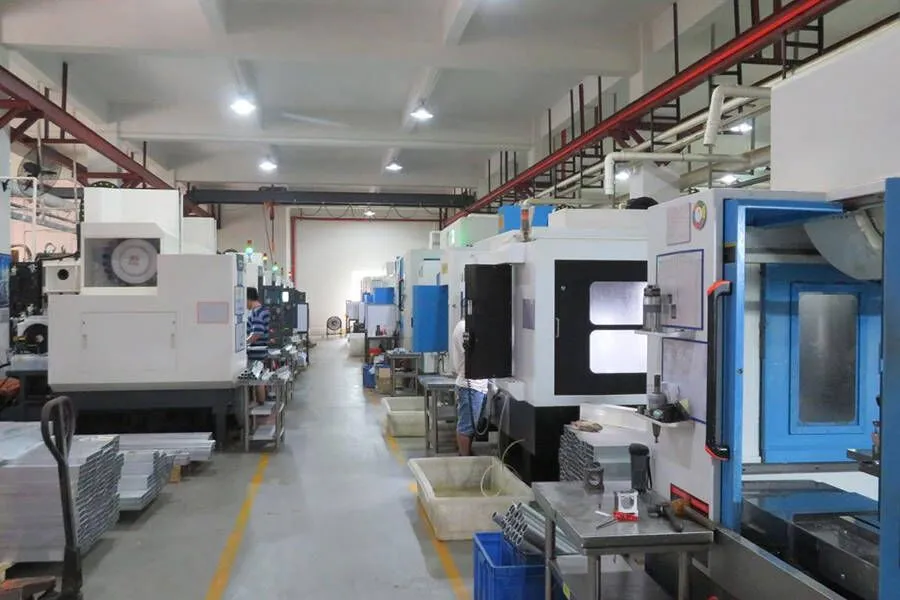Nowadays, precision machining is widely used in many industries, and a variety of precision CNC machining machines and equipment have emerged as a result. As different parts require different types of cutting methods, a range of cutting tools have been developed.
Different Precision CNC Machining Methods
CNC Milling
CNC milling is a subtractive manufacturing process that uses a rotating tool to remove material from a workpiece. Different cuts are achieved by adjusting the direction, angle, pressure and speed of the cutting tool. CNC milling machines are available in various models such as bed, box, C-frame, horizontal boring, knee, planer, floor, gantry, turret and plunger milling machines.
CNC Turning
Turning is machining on a lathe where the principle of machining is that the workpiece is rotated and the tool is fixed. During machining, the blanks or workpieces are first fixed to the rotating spindle using a fixture. As the spindle rotates, a turret containing the tool controls the movement of the tool, thereby removing excess material from the stock or workpiece. Since the stock or workpiece is rotating, the final shape is some form of rotating profile, such as a cylinder, sphere, cone, etc.
Precision grinding machines
Precision grinding is one of the post manufacturing processes after machining the part/component. In precision grinding, an abrasive grinder (or grinding wheel) creates a very flat surface with a very smooth finish on the machined part. In addition, by removing a small amount of excess material, precision grinding can result in a finished product that is close to established tolerance standards in terms of finish.
CNC Drilling Machines
In a CNC drilling machine, the workpiece remains stationary while a rotating drill bit moves around and forms holes in the workpiece. These holes can be used for different purposes. By changing the size of the drill bit, the CNC drilling machine can create different sizes of holes. The depth of the hole, on the other hand, can be adjusted only by controlling the machine calibration.
Multi-axis CNC Precision Machining
Multi-axis CNC machining is a complete machining system. The cutting tool can work in four or more directions. Multi-axis CNC machining allows the creation of complex parts using a variety of cutting tools and processes such as milling, waterjet cutting or laser cutting.
EDM Machining
In electric discharge machining (EDM), metal is machined into shape with the help of electrical discharge (sparks). This process is also known by other names, such as, spark machining, wire erosion, die sinking, wire burning or spark erosion. Electrical discharge machining can only process metallic materials because they conduct electricity. Electrical discharge machining uses two electrodes – the tool electrode and the work electrode. This machining method brings the two electrodes close to each other, but they do not make physical contact.
This creates an electric arc between the electrodes, which raises the temperature of the tool electrode and melts the metal. Because they are difficult to machine with a milling machine, EDM applications typically involve the hardest metals. EDM is commonly used to create holes, slots and tapers in gears.
Swiss Turning
Swiss Turning refers to the machining of high volume, high precision cylindrical parts. Parts machined by Swiss lathes often have very fine features, called micro features. A Swiss lathe is similar to a CNC lathe or CNC lathe center, but only performs a small range of machining, yet usually runs faster and with higher accuracy than a conventional CNC lathe.
In addition to moving the spindle box, the sliding guide bush moves along the longitudinal axis of the workpiece. The guide bush provides support for the workpiece to be machined with high precision.
CNC Laser Machine
CNC laser processing uses a high-frequency laser beam to slice or engrave the material. Unlike EDM processing, laser processing can process non-metals as well as metals.
Turning and milling centers
CNC turning centers or CNC mill-turn machines combine milling and turning operations. Traditionally, milling and turning have been done on separate CNC machines. However, integrating them into a single machine can significantly simplify the manufacturing process. CNC mill-turn centers are available in two configurations – vertical and horizontal. The vertical configuration is considered more stable due to the effect of gravity on the setup.

